
Director Simone Giampaolo has accomplished something few would even attempt: taking an iconic speech, using it as the foundation of an animated short, and assembling a large group of artists to animate different sequences. All the hard work has paid off, as Only a Child is one of the 15 Academy Awards Best Animated Short Film finalists. I spoke with Giampaolo over Zoom about how he achieved Only a Child. (This Q&A was edited for length and clarity.)
Jackson Murphy: Take me back to the first time you listened to Severn Cullis-Suzuki’s 1992 U.N. speech. What were your thoughts?
Simone Giampaolo: I think I listened to the speech for the first time around 2006 or 2007 when YouTube and social media started to boom and become the thing. This speech had a second life. It became very popular because only the people who were at the United Nations summit in 1992 really listened to Severn before. It had a second life when YouTube became popular. I had a chance to listen to it around 15 years ago and then I forgot about it. I really appreciated the speech. It became viral for “the girl who silenced the world for six minutes”. But then I forgot about it.
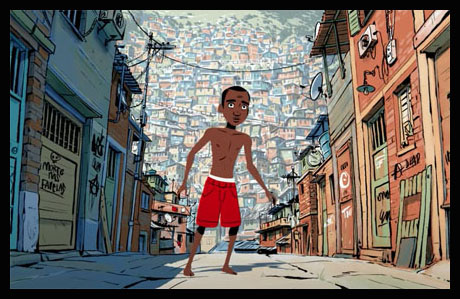
Simone Giampaolo:I discovered it again a couple of years ago. And suddenly I thought, “Oh gosh. It’s been almost 30 years now since this speech was given and nothing has changed much.” The issues that Severn underlined actually became worse over the three decades. Therefore, that’s really the one thing that pushed me to start this project: the need to let people listen to this message again while appreciating some new visuals… a new way to portray this powerful message.
JM: You’re right that it’s a need for people to listen to this, and through what you do, people will get so much out of it. How did you know that animation would be perfect to accompany this powerful speech?
SG: I believe animation is always the best medium to achieve and to reach a very wide audience — from children to adults to the elderly. You can really reach everyone with animation, which is magical. It’s something that is very difficult to do in live-action. Being an animator and always wanting to experiment with different techniques, this was the perfect opportunity to make a very eclectic film — something that I’ve never done before, combining all these different visual styles and techniques.
JM: I completely agree with you. Animation is the perfect way to get any message across to anyone of any age. What was the experience of bringing all these other directors together — assembling them all and them showing you what they can do and how they can contribute to this?
SG: It was a very interesting process. It took a lot of time to select the right people. When I applied for funding to the Swiss government, which gave some financial support, I had to make an animatic. There was only a black and white, very rough animatic to start with. I initially started approaching people with that — showing the different segments. And I already started thinking of the different techniques which could make the different sections of the short. And depending on how many techniques I had — stop-motion, paint on glass, sand animation, CGI — I started contacting the people which I knew could pull that off and provide that experience and their own particular style.
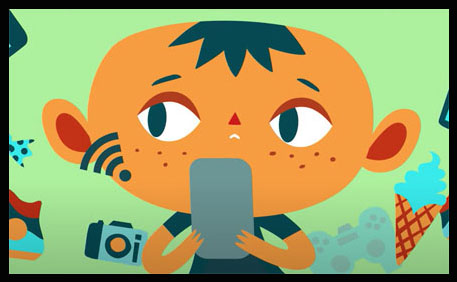
However, that’s why I left the animatic very rough to start with. I wanted this to be a collaborative, collective project. So I was really open to the directors’ (or artists’) input and ideas. I didn’t want them to just follow my guidelines. I wanted them to respect them but also to add their own input, their own personal touch to every segment of the short.
JM: I’ve seen some of the work you’ve done in the animation world throughout your career, which is great. And you’ve worked for a lot of different studios and companies. How did some of those experiences prepare you for something like this?
SG: Everything I’ve done in my career really prepared me for this because it’s difficult to handle art directors. I had to treat them almost as clients with my velvet gloves — being very firm and being strong in some of the opinions I thought were relevant and crucial but also being gentle and kind when it comes to welcoming ideas and input. I come from a CGI background. It’s mostly very funny, bouncy, CGI stuff. That’s where I’ve always felt comfortable with comedy and silly, bouncy, fluffy characters. And that’s one of the reasons why I wanted to do something different for once. When you work for many years with commission films, advertisements and commercials, it starts to get heavy. You tend to sell your own soul to products or things you don’t believe in, sometimes. You’re wearing that mask of commercial director and are trying to sell stuff that you’re probably not interested in.
After so many years of that, I got really passionate about doing an indie film — doing something closer to my heart, something which I actually believe in. But every single commercial job prepared me for this because being a commercial director means being flexible, being able to change your point of view quickly, depending on the clients’ feedback. It means welcoming suggestions that sometimes you don’t agree with, especially when you have some requests from clients that you think, “Oh that’s not gonna work. That’s gonna ruin our commercial.” But then you actually make it work in some way. Everything prepared me for being as flexible as possible in order to handle so many different art directors for Only a Child.
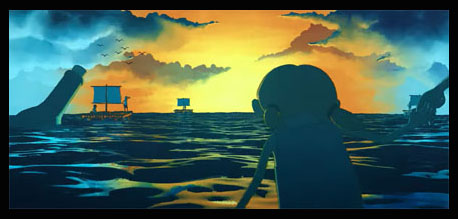
JM: I’m glad those experiences helped you. And how did you bring Severn into this? What were her contributions? Was she initially surprised that you wanted to make an animated short based on her speech?
SG: Severn came first. Severn was the very first person I got in touch with, even before the production company. I really wanted to have her blessing before I embarked on this long adventure. To make an independent animated short can take one, two, or up to five years. Only a Child was around a year and a half to make, so I didn’t want to start something without her blessing and her mission. First things first: I contacted her. She was really thrilled and enthusiastic about the idea. She said the speech was adapted in many different forms: books, poetry, illustrations, documentaries, even heavy metal bands made some music based on her words. But it was never adapted into an animated film. So she was completely up for it. She didn’t know whether I was serious or not at the time. And then I got in touch with the production company and all the artists who made it possible.
JM: Glad you got her support.
SG: And she got involved over the production when it comes to the speech. If you listen to the original speech and you watch Only a Child, you’ll realize that I have re-edited the speech. It has been trimmed and re-edited in order to make it more universal.
JM: This short says that we are all children of someone. How have your parents influenced you throughout your life and career?
SG: That’s a very nice question. I think Only a Child is really a product of my parents’ influence. My father is very artistic. He’s a retired painter, graphic designer and sculptor. He’s very eclectic. I think the love for different techniques came from there. And my mother is extremely organized. She wants to organize and put together big collaborations and people — making them interact and bringing them together. That came from her — that artistic drive and that organization feeling. They were both necessary to put together such a big, collaborative project. So yeah, my parents influenced me a lot throughout the years.
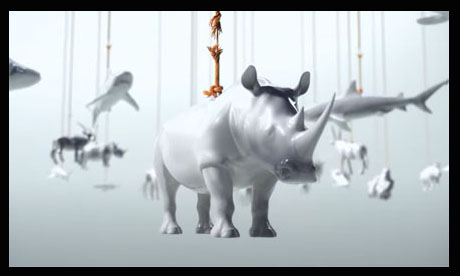
JM: That’s so good to hear. We don’t have all the answers, but we can figure all of this out. That’s another major theme that you show with Only a Child. Was there a moment in making this where you felt, “I don’t know if I have all the answers to pull this off, but let me see if I can figure this out and make this work”?
SG: Yeah, absolutely. I guess that was from day one. The only things I could really control were the edit, the animatic and the music. The rest was all a surprise, you know? It was all up to the artists to interpret certain things, come back, have a discussion with me, trying to fix things early if there were problems or issues which would impact the storyline or the flow of the narration. It was all figuring out. Switzerland, where the project was created, has a very small animation community. But usually people don’t collaborate… they do their own, small, separate projects.
It may be the first time that so many Swiss artists come together and participate in something way bigger than their own studio or their own personal work. Everything had to be discovered along the way. I come from a CG background. Therefore I don’t know how sand animation’s done. I don’t know how long it takes to make certain stop-motion sequences. I don’t know anything about paint on glass. So I had to talk to these artists and understand their schedule, pipeline and the way they work — in order to make it visible.
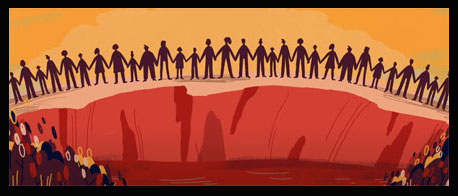
JM: Bigger than individual projects… and it’s a big cause that you’re going after with this. One of your achievements, already, is being on the Oscar shortlist. Have you thought about learning if you’ll be an Academy Award nominee — that feeling you’ll have, and potentially attending the Oscars and maybe winning an Oscar?
SG: (laughs) Do you mean if I have already imagined the feeling?
JM: Yeah. Have you thought about what could happen in the next couple of months?
SG: Even coming this far with a small, independent short is a dream. When we [got] on the shortlist, I had to pinch myself for a couple of days before actually believing it. It’s unbelievable. I try not to think too far. For these kinds of things in order to not jinx the mood, I try to live [in] the moment. I don’t know what could happen next. I don’t even know if the Oscars are going to be in-person or online. (laughs) It’s such a weird time to think ahead.
- INTERVIEW: Strap In For “Mars Express” - April 30, 2024
- INTERVIEW: Jeff Fowler On “Knuckles” And “Sonic 3” - April 22, 2024
- INTERVIEW: “Inside Out 2” Director And Producer On Pixar Sequel - April 16, 2024


 January 18th, 2022
January 18th, 2022  Jackson Murphy
Jackson Murphy  Posted in
Posted in  Tags:
Tags: 






